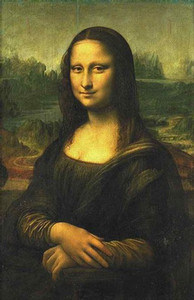Share
Seeing Near and Far
There’s an old fraternity house saying, “Good from far, but far from good,” implying that some people look great from far away, but as you se...


There’s an old fraternity house saying, “Good from far, but far from good,” implying that some people look great from far away, but as you see them close up, they don’t look so good.
As it turns out, this isn’t just a matter of detail.
In the June/July 2006 issue of Scientific American Mind, Vilayanur S. Ramachandran writes about the apparent illusion of the Mona Lisa and her mysterious smile. Psychologists have proven that depending on the distance to an object, the brain uses different methods of identification. From afar, the equivalent of a low-pass filter is applied, which brings out shadow detail that reveals a smile. However, when you view it up close, the brain uses more high-pass detail, which makes the smile more ambiguous.
So it seems that information at different scales can affect how the brain “sees” images, and how what we perceive is really a composite of several scales of seeing.
This led me to think about why the great photographers are so good. They seem to see things that the majority doesn’t see. Whether it is a mixture of foreground and background elements, or the play of shadow and light within a scene. Perhaps there is a brain-path disposition to “seeing” that makes some photographers great.


